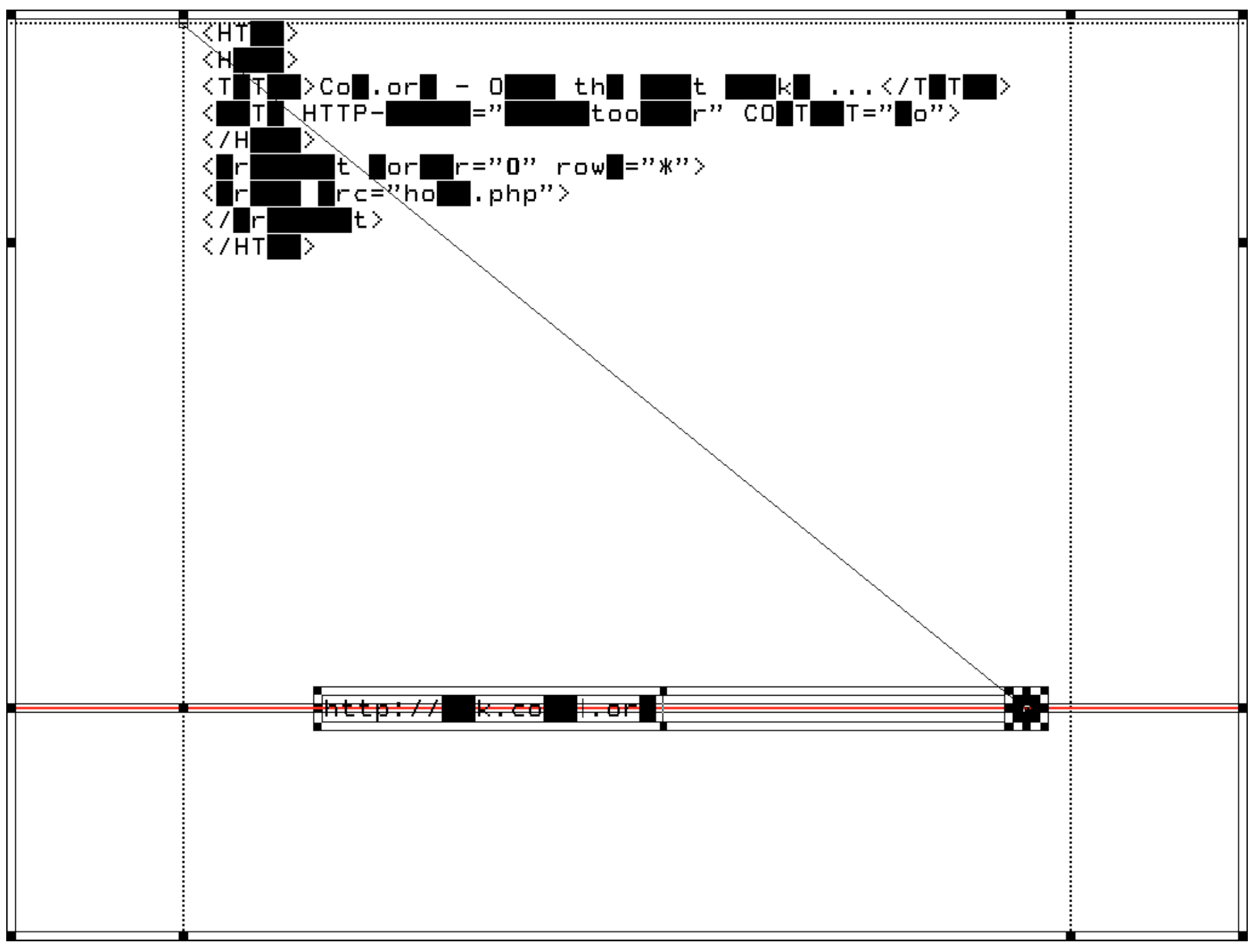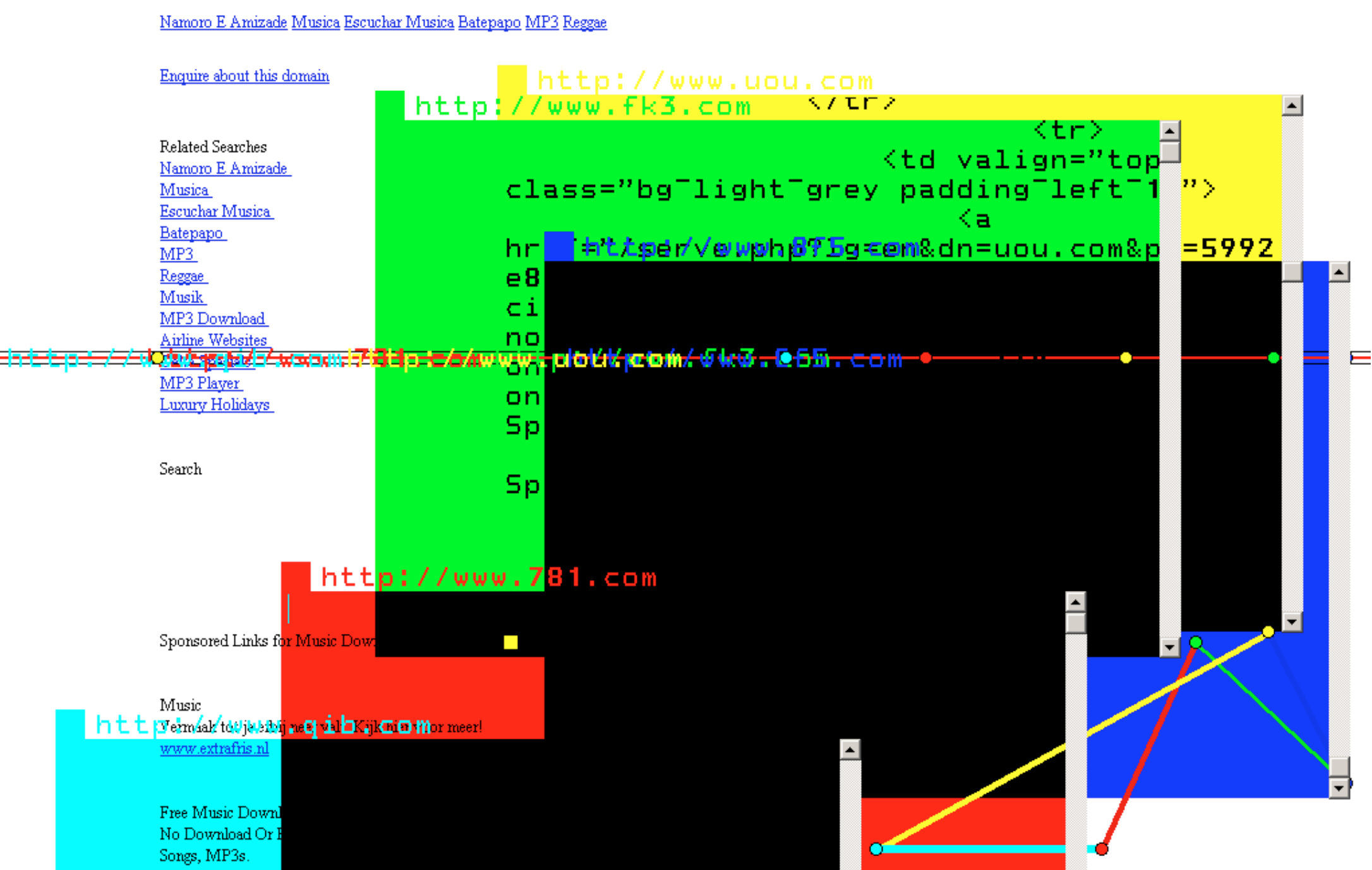[︎]
Jodi on the Rack (2006)
[Jodi op de pijnbank]
Master thesis in Dutch (2006), supervised by Joost Bolten.
Introduction
In October 2005 I visited the World Wide Wrong, a solo show from the Dutch/Belgium artist collective Jodi (Jo for Joan Heemskerk and di for Dirk Paesmans) in Montevideo, the Institute for Media Arts in Amsterdam.
Untitled Game (Jodi, 1996) was one of the works on display. I immediately recognised the game Quake 1 (id software, 1996), of which Untitled Game is a collection of mods. At first, the confrontation with these mods was confusing, but after reading the texts that accompanied the exhibition, I understood the work better; my associations with the game Quake had mislead my first interpretations - I had let my previous experiences lead my reading of the work and Jodi had played with this habitual pattern of expectation.
This was my first experience with digital art that played with the norms and expectations of digital material. Untitled Game was an eye-opener. I realised there were new, changing and evolving differences not only between traditional ‘high art’ and contemporary, interactive ‘high art’, but also between art and entertainment. What intrigued me most, however, was that the work of Jodi, an art collective that does not follow any traditions, is still part of a canon of ‘high art’ and has won quite a few important prices!
The debate around art and the videogame industry has grown in intensity since the exhibition The Next Level in the Stedelijk Museum Centraal Station (SMCS). The exhibition got a lot of publicity and has been visited by both the game community as well as the normal museum crowd and received some critical feedback from both sides. Merel Roze wrote a critical piece titled ‘Games = Art’. From this piece it seemed like the question if a popular mass medium belongs to the space of the contemporary museum is again relevant.
These developments made me think more deeply about the medium of Untitled Game - the computergame; how does this technology actually work, and how does the medium in which the work is disseminated and institutionalised (the internet, the museum and the art discourse) influence the (understanding of the) work. These are the questions I wish to analyse in this thesis. I am using the word analyse here in quite a literal way - I will take Untitled Game apart for a more close-up understanding, using the metaphor of a medieval ‘rack’; a technique used in torture - to force a subject to answer during questioning.
During this questioning of Jodi and Untitled Game, I will limit myself to five perspectives; in chapter one I will describe the art collective Jodi and the work. The following chapter I will dedicate to the difference and tension between high art and popular culture, to position Untitled Game within the perspective of critical theory. In the third chapter I will describe Untitled Game from an aesthetical point of view. Here I am not just using the classic, rather passive meaning of aesthetics, referring to passive contemplation, but also using the term in a more active form. In doing so, I wish to come back to a more philosophical meaning of the term esthetics. In the fourth chapter, I will describe Untitled Game from a technological and art historical point of view. Finally, in chapter five - I will describe the work as an ephemeral work of art.
︎ Jodi op de pijnbank (Dutch)
︎ bijlagen Jodi op de pijnbank (Dutch)


